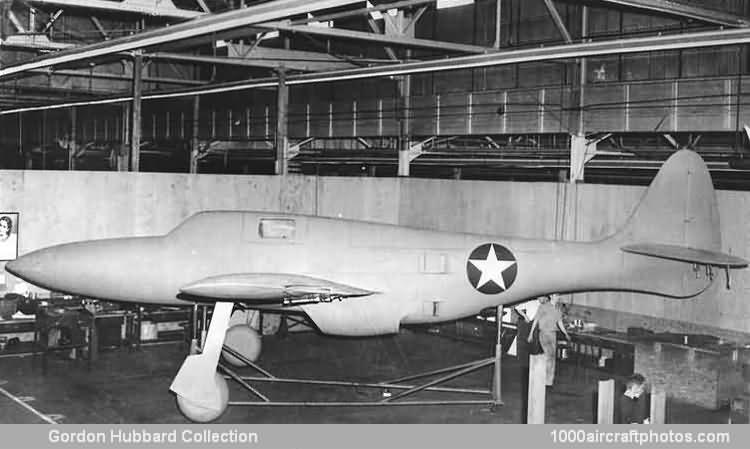03/31/2024. Remarks by Johan Visschedijk: "Concurrent with the development of the P-47, Republic was also working on two other experimental fighters. A few weeks after the XP-47B first flew, Republic initiated a new fighter project designated AP-18. Essentially a more advanced version of the earlier AP-12 Rocket proposal, this was intended as a highspeed, high-altitude local defense interceptor to protect American bases and cities against enemy bombers. Thus it was to be heavily armed, and equipped with a pressurized cockpit. In late 1941 the Air Corps ordered two AP-18 prototypes, now redesignated XP-69, and by June 1942 Republic had completed, in a secure and walled-off area of its factory, a three-quarter scale mock-up.
The XP-69 was to be powered by a 42-cylinder, six-row, air-cooled Wright 2160 radial engine of 2,500 hp, buried in the aircraft's mid-fuselage, aft of the pilot, and cooled by air ducted through a large ventral intake. Power was to be transmitted to a pair of 13 ft 8 in diameter contra-rotating propellers via a long extension shaft passing beneath the cockpit, the latter located well forward of the wing; the aircraft was also to be equipped with a turbo-supercharger, in order to attain high altitudes. The influence of Chief Engineer Alexander Kartveli was clearly evident in the streamlined empennage, and this was continued through to the XF-12 Rainbow and the P-84 Thunderjet. The armament of the XP- 69 was to be two big 1.46 in (37 mm) cannon in the nose and four 0.50 in (12.7 mm) machine guns in the wings.
The XP-69 would have been a real monster: with a wing span of 51 ft 8 in (15.75 m) and an overall length of 51 ft 6 in (15.70 m) it would have been bigger than the P-38. Its maximum weight would have been 26,164 lb (11,868 kg) but with only 2,500 hp available its intended speed of 450 mph (724 kg) seems optimistic. Service ceiling was to have been 48,900 ft (14,905 m) and fuel capacity up to 700 gal (2,650 l). However, in May 1943 the USAAF cancelled the XP-69 contract."
